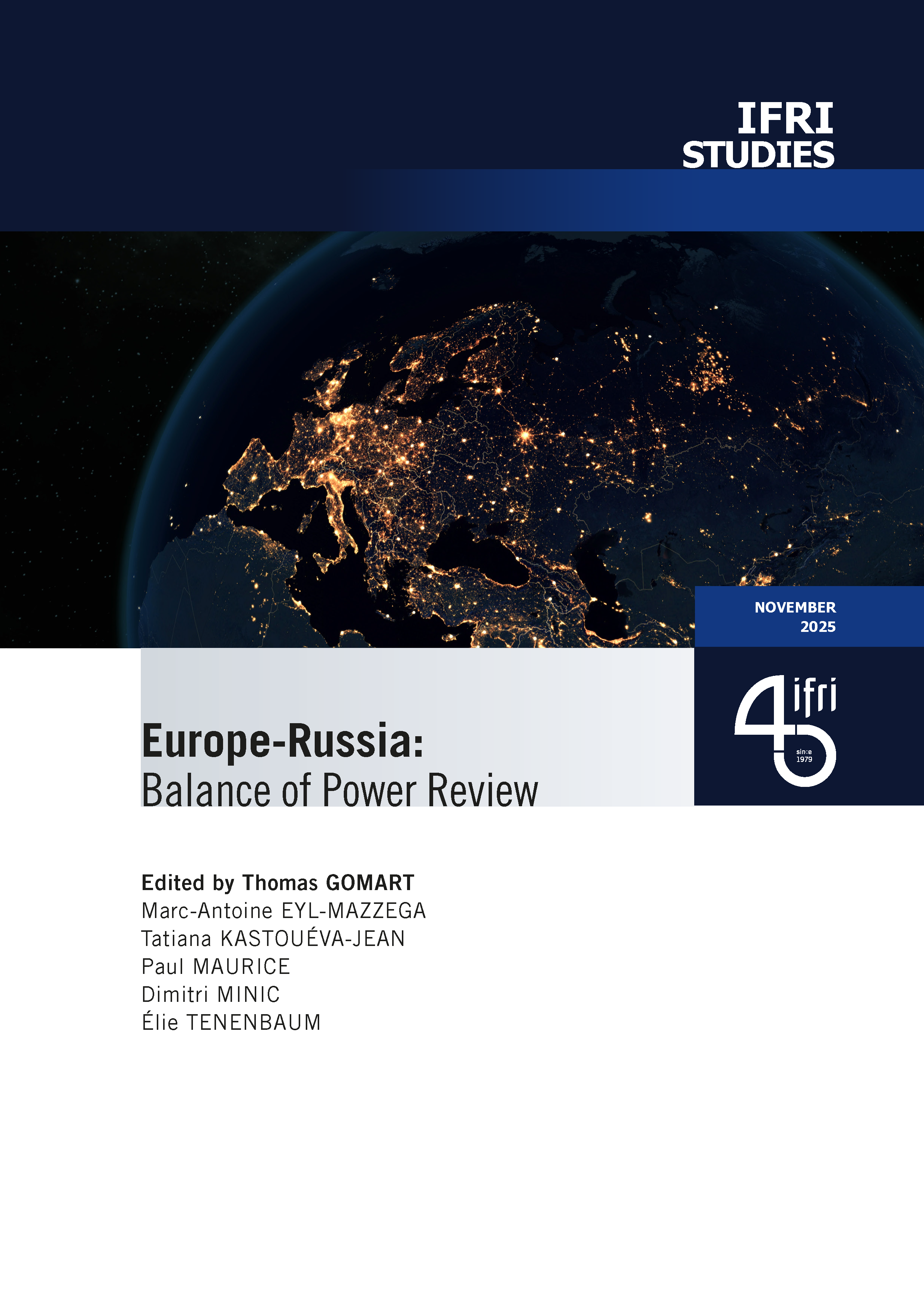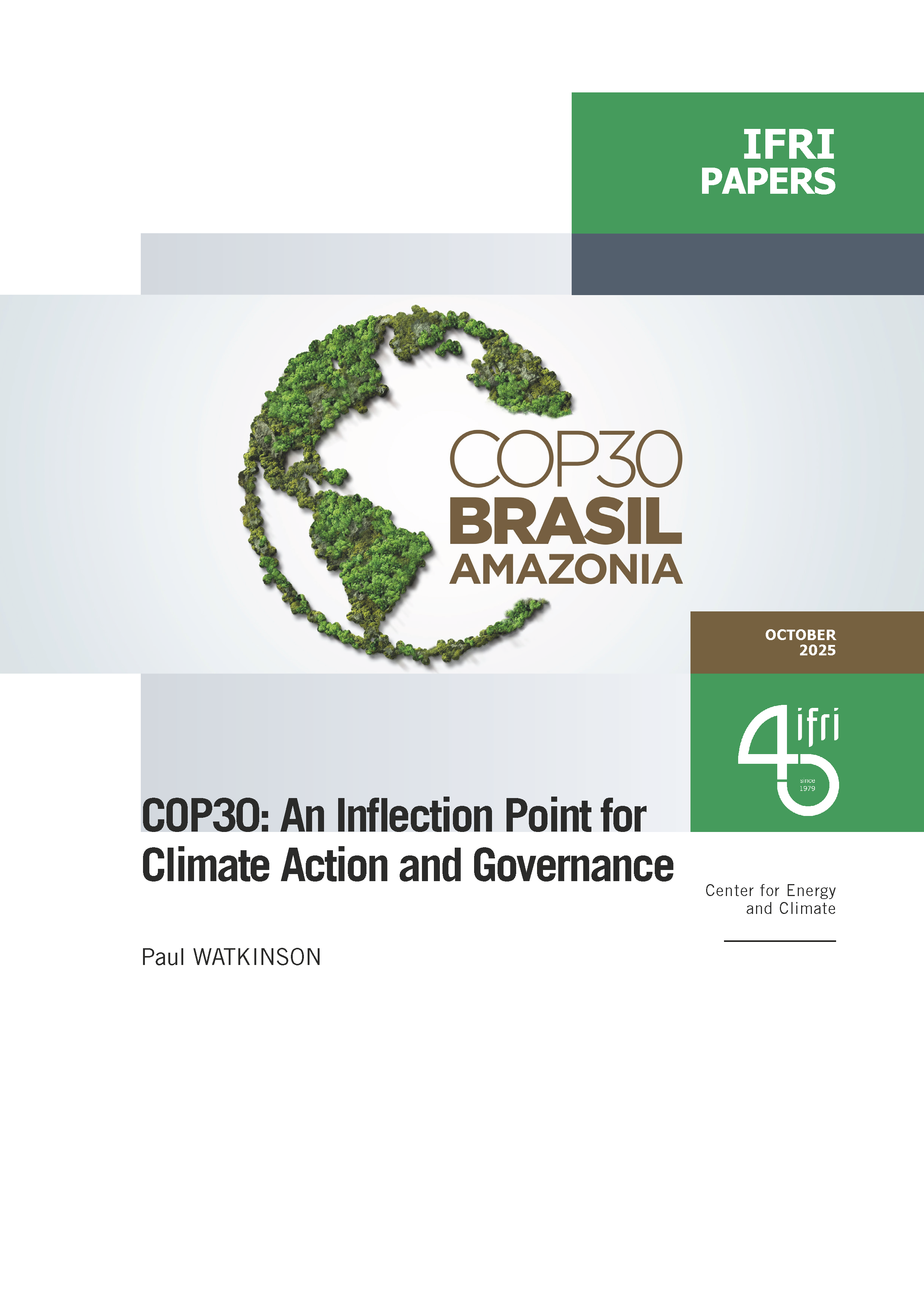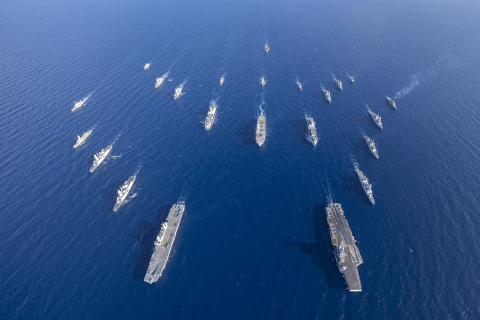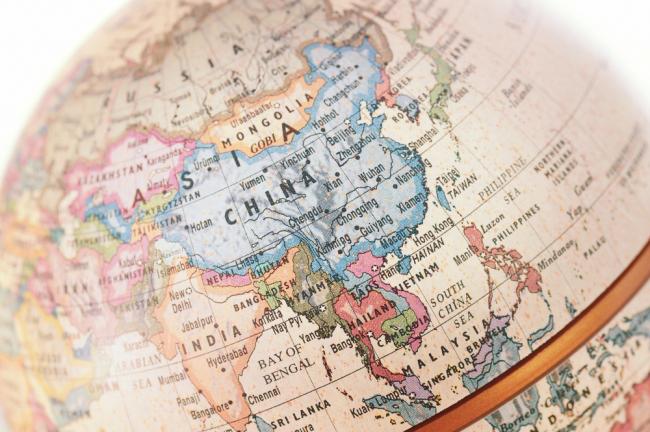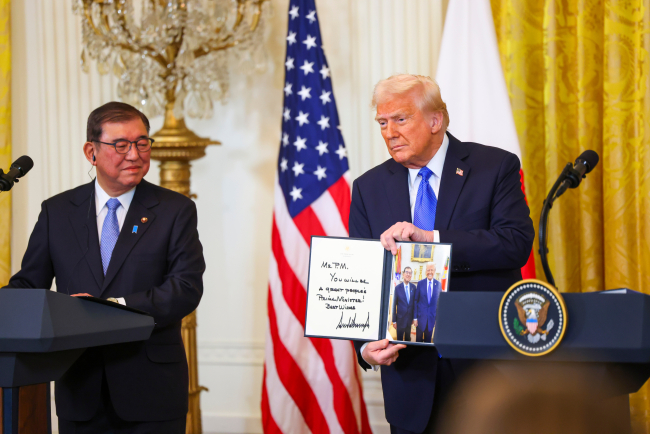Opening up the G7 to South Korea to Address Contemporary Global Challenges
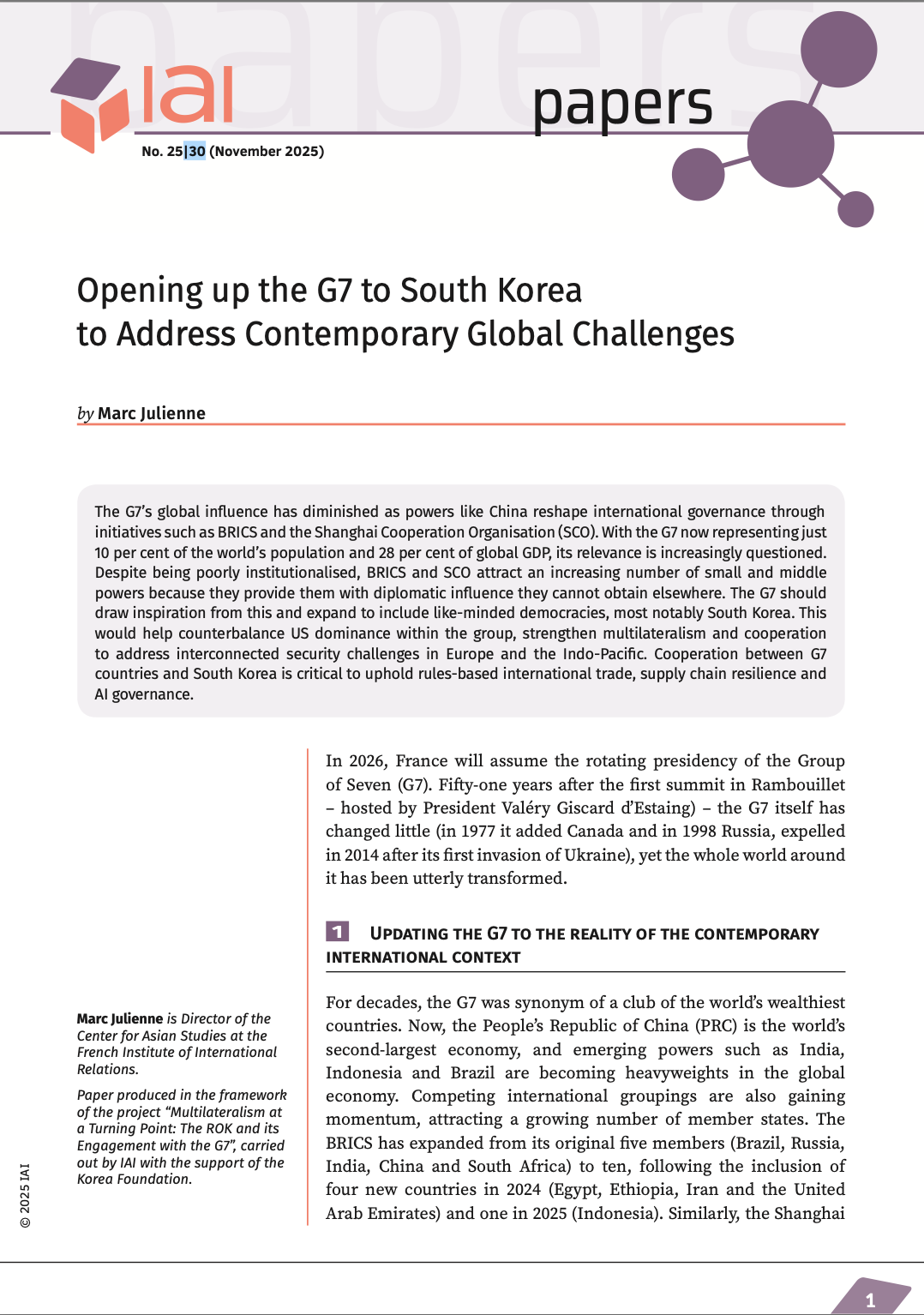
The G7’s global influence has diminished as powers like China reshape international governance through initiatives such as BRICS and the Shanghai Cooperation Organisation (SCO). With the G7 now representing just 10 per cent of the world’s population and 28 per cent of global GDP, its relevance is increasingly questioned.

Despite being poorly institutionalised, BRICS and SCO attract an increasing number of small and middle powers because they provide them with diplomatic influence they cannot obtain elsewhere. The G7 should draw inspiration from this and expand to include like-minded democracies, most notably South Korea. This would help counterbalance US dominance within the group, strengthen multilateralism and cooperation to address interconnected security cha lenges in Europe and the Indo-Pacific. Cooperation between G7 countries and South Korea is critical to uphold rules-based international trade, supply chain resilience and AI governance.
In 2026, France will assume the rotating presidency of the Group of Seven (G7). Fifty-one years after the first summit in Rambouillet – hosted by President Valéry Giscard d’Estaing) – the G7 itself has changed little (in 1977 it added Canada and in 1998 Russia, expelled in 2014 after its first invasion of Ukraine), yet the whole world around it has been utterly transformed.
UPDATING THE G7 TO THE REALITY OF THE CONTEMPORARY INTERNATIONAL CONTEXT
For decades, the G7 was synonym of a club of the world’s wealthiest countries. Now, the People’s Republic of China (PRC) is the world’s second-largest economy, and emerging powers such as India, Indonesia and Brazil are becoming heavyweights in the global economy. Competing international groupings are also gaining momentum, attracting a growing number of member states. The BRICS has expanded from its original five members (Brazil, Russia, India, China and South Africa) to ten, following the inclusion of four new countries in 2024 (Egypt, Ethiopia, Iran and the United Arab Emirates) and one in 2025 (Indonesia). Similarly, the Shanghai Cooperation Organisation (SCO), established in 2001 with six founding members (China and Russia plus four Central Asian states), has since grown to include India and Pakistan in 2018, and Iran and Belarus in 2023 and 2024, respectively – bringing its total membership to ten. To fully understand the reach of these organisations, it’s important to note that BRICS introduced a new category of “partner countries” in January 2025, officially encompassing nine states.1 Notably, during its most recent summit in Tianjin in September 2025, the SCO merged its “Observer” and “Dialogue Partner” statuses into a single “SCO Partners” category, now including seventeen countries spanning from Southeast Asia to the Near East.2
> Read the full article on IAI Istituto Affari Internazionali's website.

Available in:
Themes and regions
ISBN / ISSN
Share
Related centers and programs
Discover our other research centers and programsFind out more
Discover all our analysesExpanding SPDMM as a pivotal institution in the Pacific – A French perspective
The South Pacific Defence Ministers’ Meeting (SPDMM) is the only forum that brings together defense ministers from the wider South Pacific — including Chile, which is hosting it for the first time. This heterogeneous group of countries with varying resources, capacities, and interests — Australia, Chile, Fiji, France, New Zealand, Papua New Guinea (PNG), and Tonga — are united by their shared determination to strengthen cooperation on maritime security and humanitarian assistance and disaster relief (HADR) activities.
EU’s Derisking From China: A Daunting Task
With economic security as a major concern, the EU has recently turned to “derisking” from China. The EU strategy entails reducing critical dependencies and vulnerabilities, including in EU supply chains, and diversifying where necessary, while recognizing the importance and need to maintain open channels of communication.
Sri Lanka’s NPP Government. From System Change to Structural Compliance
In September 2024, a relative outsider to Sri Lanka’s two-party-dominated political system, Anura Kumara Dissanayake, won the presidential elections. The anti-establishment, populist movement he represented, the National People’s Power (NPP), went on to receive an overwhelming mandate in the November 2024 general elections, winning 159 seats in a 225-member parliament.
Japan Under Trump: Alliance Strains, the Push for Autonomy and Essential Partnerships
Japan is under pressure from the United States (US) on punitive tariffs and demands for increased defence spending. This has sparked deep concern over US credibility and triggered growing domestic calls for greater autonomy.


